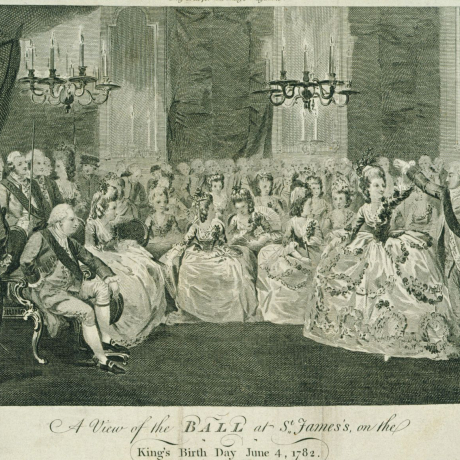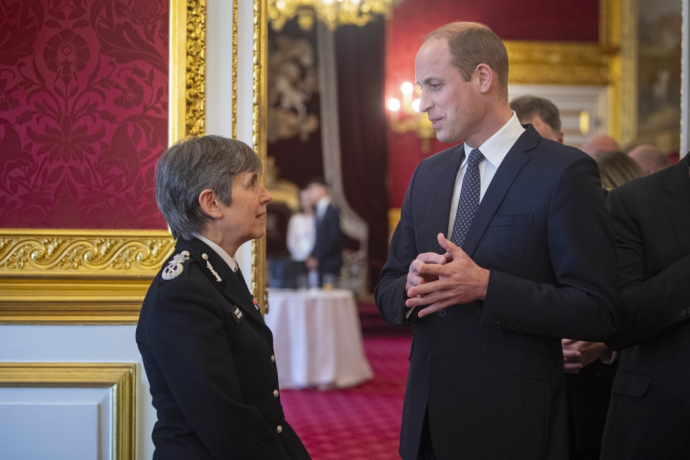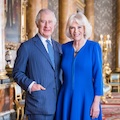St James's Palace today
Today, St. James's Palace remains a busy working palace. The State Apartments are sometimes used for entertaining during in-coming State Visits, as well as for other ceremonial and formal occasions. They host receptions for charities with which members of the Royal Family are involved, numbering approximately 100 in a year.
The offices of Royal Collection Trust, the Marshal of the Diplomatic Corps, the Central Chancery of the Orders of Knighthood, the Chapel Royal, the Gentlemen at Arms, the Yeomen of the Guard and the King's Watermen are all located at St. James's Palace.

St. James's Palace retains an important ceremonial function. The Accession Council meets in St. James's Palace following the death of a monarch and, later, the accession of a new Sovereign is proclaimed by Garter King of Arms from the Proclamation Gallery overlooking Friary Court. Family occassions have also been held at St James's Palace over the years, most recently the christening of Prince Louis in 2018.
The St. James's Detachment of The King's Guard mounts daily guard in Friary Court
History of St James's Palace
Built largely between 1531 and 1536 by Henry VIII, much of the original red-brick building erected by Henry VIII still survives today, including the Chapel Royal, the gatehouse, some turrets and two surviving Tudor rooms in the State apartments.
It was in St. James's Palace in 1558 that Mary Tudor signed the treaty surrendering Calais. Elizabeth I was resident during the threat posed by the Spanish Armada and set out from St James's to address her troops assembled at Tilbury, to the east of London.
St James's Palace was built by Henry VIII on the site of the Hospital of St. James, Westminster between 1531 and 1536.
The future Charles II and James II were both born and baptised at St James's, as were Mary of York (Mary II), Anne of York (Queen Anne) and James Francis Edward Stuart (the Old Pretender).

King's Birthday Ball at St.James's Palace, 1782
View on the Royal Collection websiteAfter the destruction of the Palace of Whitehall, all monarchs until William IV lived at St. James's for part of the time. In 1809, much of the east and south ranges of the Palace was destroyed by fire, but the State rooms were restored by 1813.

The King's Presence Chamber, St James's Palace
View on the Royal Collection websiteWilliam IV was the last Sovereign to use St. James's Palace as a residence. After his death, Court functions were still held in the State apartments, which had been enlarged by Christopher Wren and embellished by William Kent. Some rooms were later partly redecorated by William Morris. Queen Victoria married Prince Albert in the Chapel Royal in 1840, and court levées continued to be held at St. James's Palace until 1939.














